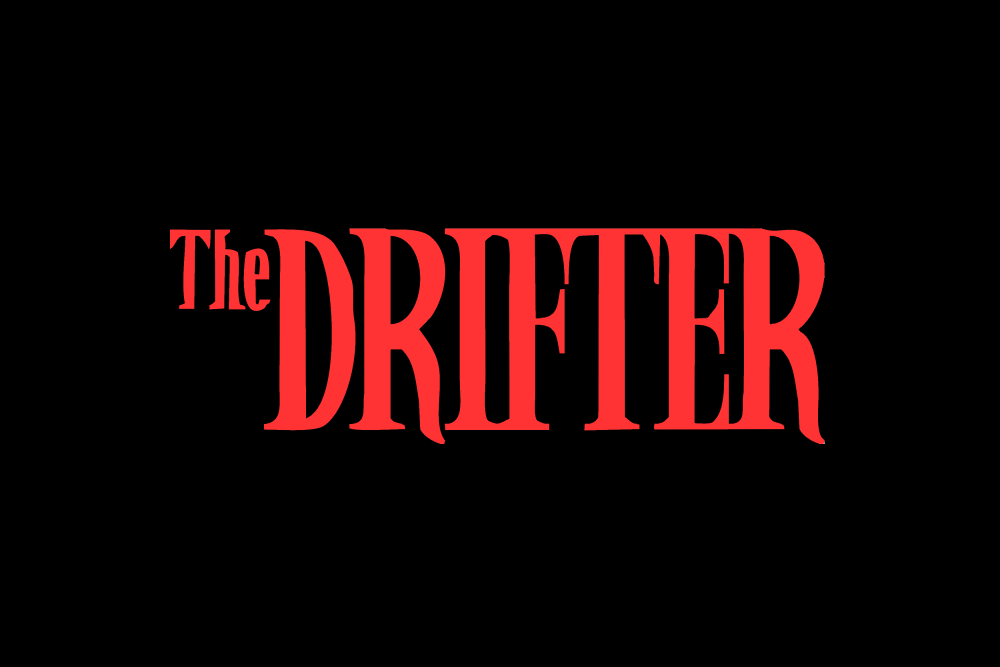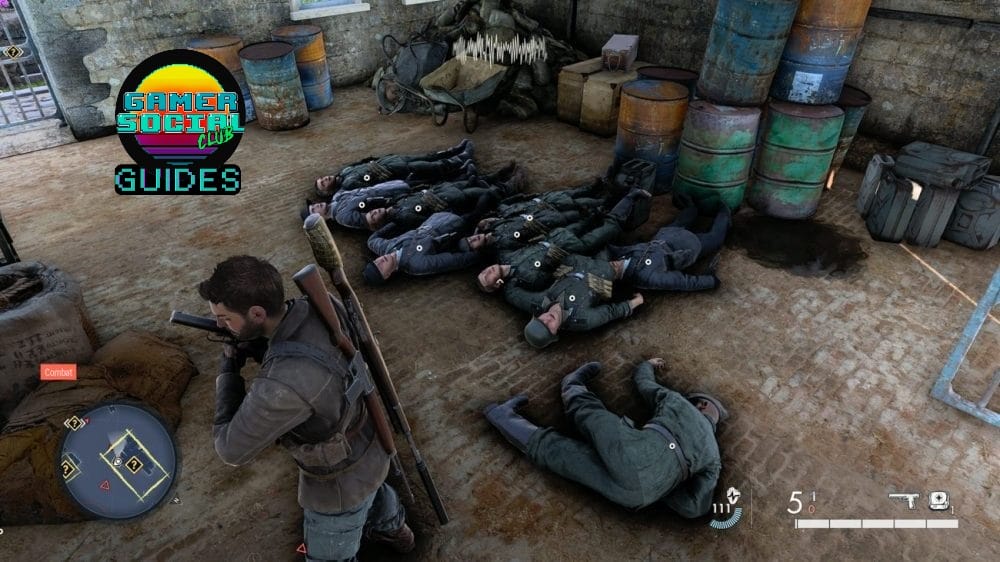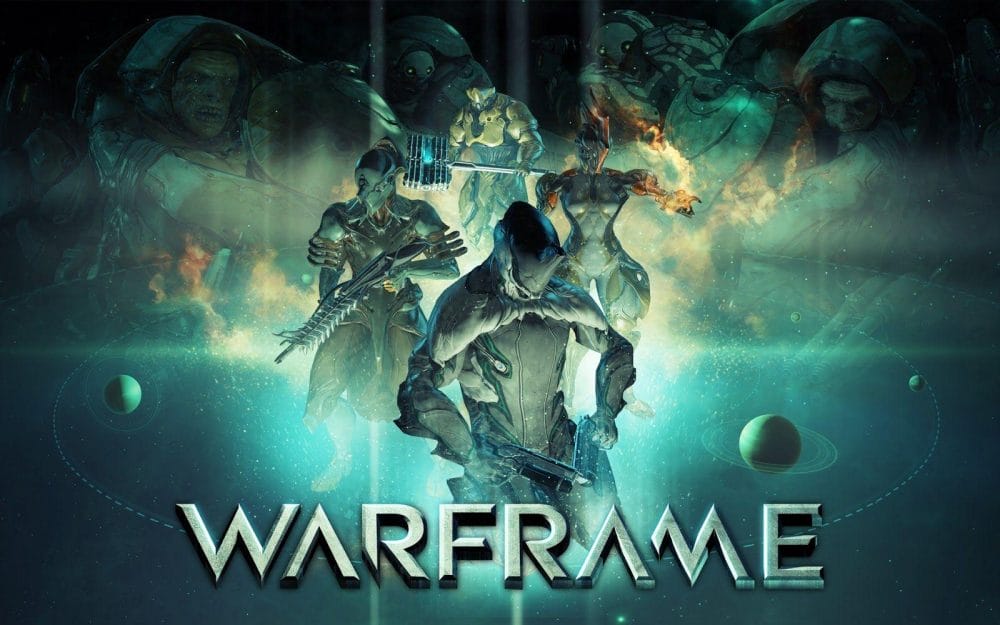Some of my earliest experiences with PC gaming were with point-and-click games, a significant departure from the usual fare I grew up with as a console gamer in the 90s. My introduction to the genre was with the Discworld games, followed quickly by the likes of Simon the Sorcerer and Monkey Island, which have no doubt informed my expectations of the genre. Daft, slapstick humour, and bizarre, obtuse puzzles, all wrapped up in cartoony, expressive pixel art, and there are plenty of other titles in the point-and-click genre that match that very description. The Drifter bucks many of these trends, all while updating the gameplay and telling a complex, compelling narrative, for an experience that felt more like a cold shock down my spine than the warm embrace of its predecessors.
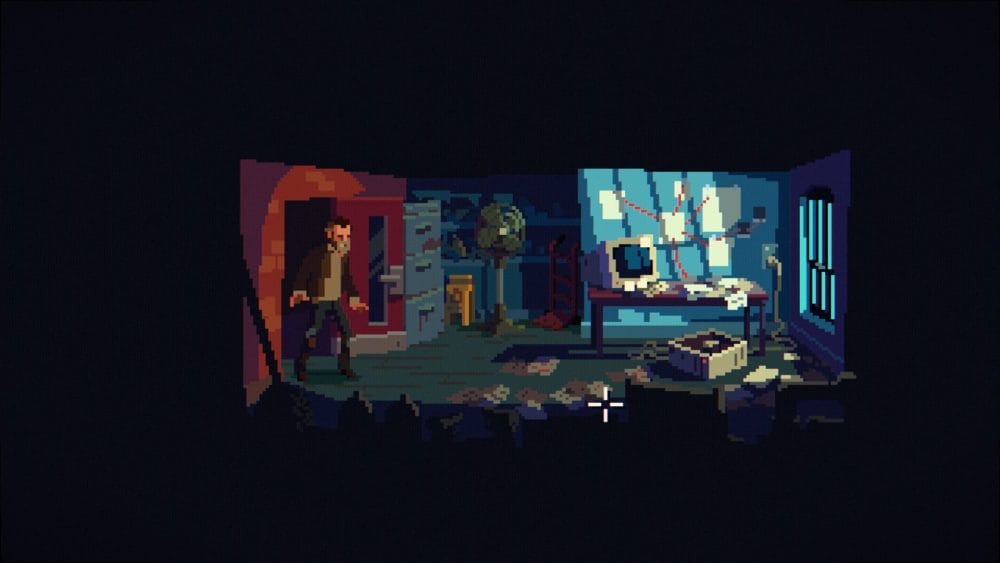
Premise
The Drifter is a point-and-click investigation thriller game from Powerhoof, developers of 2014’s Crawl, drenched in the trappings of its inspirations, most notably the works of Stephen King and David Cronenberg.
Mick Carter is the eponymous drifter who has jumped a freight train to get back to his hometown of Mawson, Australia, for his mother’s funeral. He’s anxious and unsure about his return, particularly about seeing his ex-wife, Sarah, whom he hasn’t seen since he left five years ago.
Unfortunately, Mick has more to worry about than awkward family reunions, as mysterious special forces types immediately start hounding him, and he becomes embroiled in the disappearances of Mawson’s homeless population. While trying to find a way to reach his older sister, Annie, Mick witnesses a local reporter being kidnapped by ghoulish spec-ops types, only to be knocked out, tied up, and tossed into the reservoir to die. But death is not the end for Mick, as when he dies, he immediately wakes up just moments before his demise.
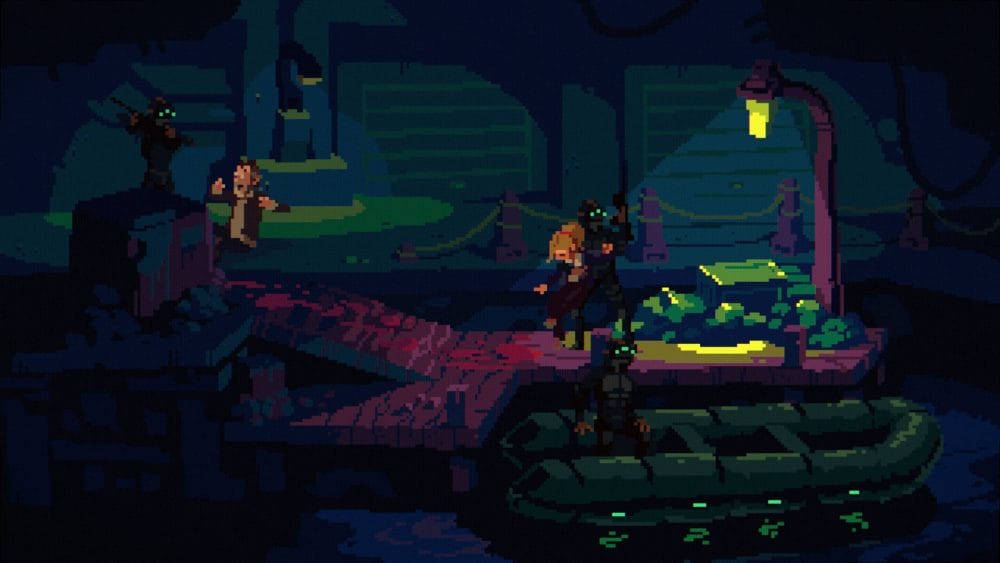
What is happening to the homeless people of Mawson? Why are secretive military types yanking people off the streets? And why does Mick keep coming back to life? What follows is a gritty, hard-hitting sequence of events full of twists and turns, with a touch of the supernatural thrown in for good measure.
Gameplay
The Drifter has many of the trappings that players of point-and-click games will be familiar with, albeit with some rethinking of fundamental mechanics that help to streamline the experience without undermining the thought-provoking and challenging gameplay. Players control Mick, moving him around and between a select number of screens that make up important locations throughout the game, from a grimy underpass to the disheveled comfort of his sister’s home. The main focus of gameplay is to interact with items in the environment and speak with a varied cast of characters to solve perplexing puzzles, learn new information, and hopefully make heads or tails of what is going on in Mawson.
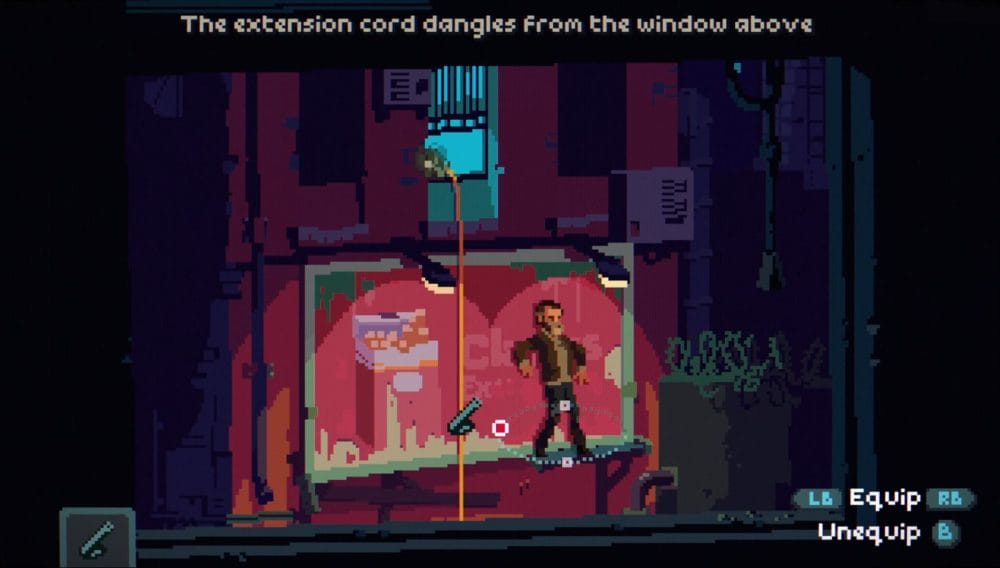
Before starting The Drifter, I immediately had flashbacks to all the different options and combinations of things you could do in a traditional point-and-click game, and how out of left field the solutions were to some puzzles. The Drifter does away with much of that, for better and for worse, with the developers creating an ingenious radial compass and easily manageable inventory systems. When looking around an area, a white ring appears at Mick’s feet with points on it indicating everything he can interact with within a certain distance. Different icons will appear over items and characters to show what action Mick will perform, whether it’s looking at something, picking it up, or using an item from Mick’s inventory. These icons can change for follow-up actions, with some objects only having a grey X to show they are not important. There are occasions when Mick will have to use one or more items together in his inventory, leading to newly crafted tools or other components. Conversation topics are tracked at the top of the screen during interactions with NPCs, and with up-to-date info related to each one to help remind you of what you have learned.
Much of the puzzle-solving in The Drifter is grounded in reality, with Mick having to find rational, if slightly improvised, methods to reach his goals. Nothing felt overly contrived, except maybe some of the cast’s behaviour or reactions to certain events, and meant there were few occasions when I was at a loss for what to do. I appreciated this greatly, as it felt very rewarding to think out a solution that made sense and find success, rather than stumbling towards an answer that only made sense after seeing the strange logic required to get there.
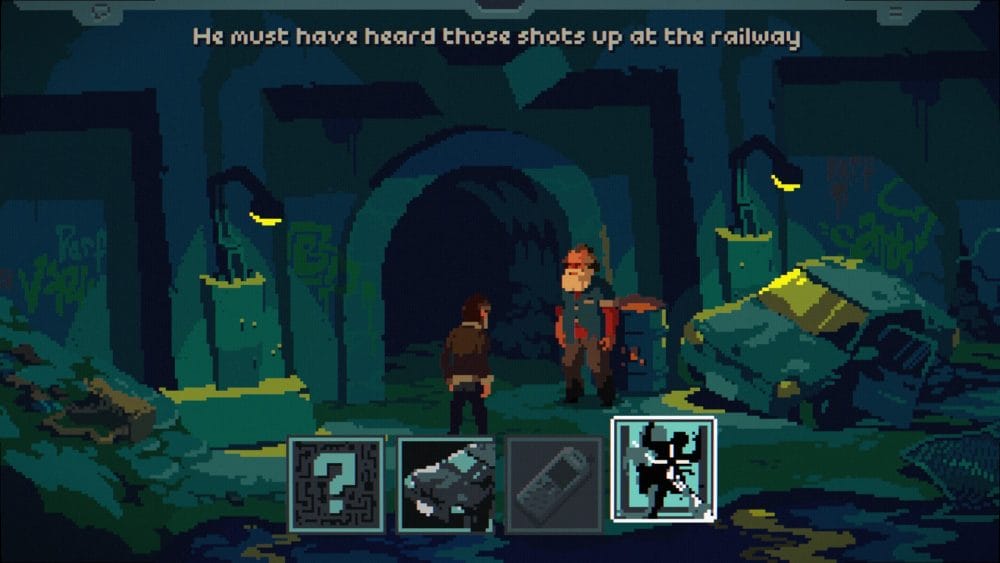
The reason I preferred this style of point-and-click gameplay, where I felt I was piecing together a bigger picture with each conundrum, rather than creating wacky combinations of actions and objects, is due to the game’s tone and narrative. The Drifter is a dark game, dealing with some heavy topic matter, which it does not shy away from. Mick is suffering from a lot of trauma from a horrible tragedy that caused him to leave his family and Mawson five years prior, and to watch and hear him struggle with it throughout the game leads to a pretty grim experience. Mick is trying to run away from a past that he cannot escape, and often finds himself battling his demons, quite literally. It’s these deeply personal and painful themes, along with the game’s overarching narrative, that make me glad the developers dispensed with much of the silliness found in many point-and-click games.
That’s not to say The Drifter is devoid of humor; it’s just a lot more macabre. The stakes are often high during the game, with death just one wrong move away, leading to some gruesome, occasionally funny, outcomes for Mick. But due to his strange ability to come back to life moments before his grisly end, the player has the chance to rethink their options. It’s a very clever meeting of mechanics and narrative that is central to The Drifter, and I was extremely impressed with how well thought out it all was. A particular sequence in the penultimate chapter of the game is not only fantastically executed but also bat-shit brilliant, and one I will not soon forget.
Visuals
As I said earlier in this review, The Drifter wears its inspirations proudly, with even the opening title giving 80s horror film vibes, sharp red lettering in front of a dark horizon over a sea of rooftops. While the game definitely harkens back to its predecessors through its detailed pixel art, it has a darker colour palette for most of the environments due to much of it taking place at night.
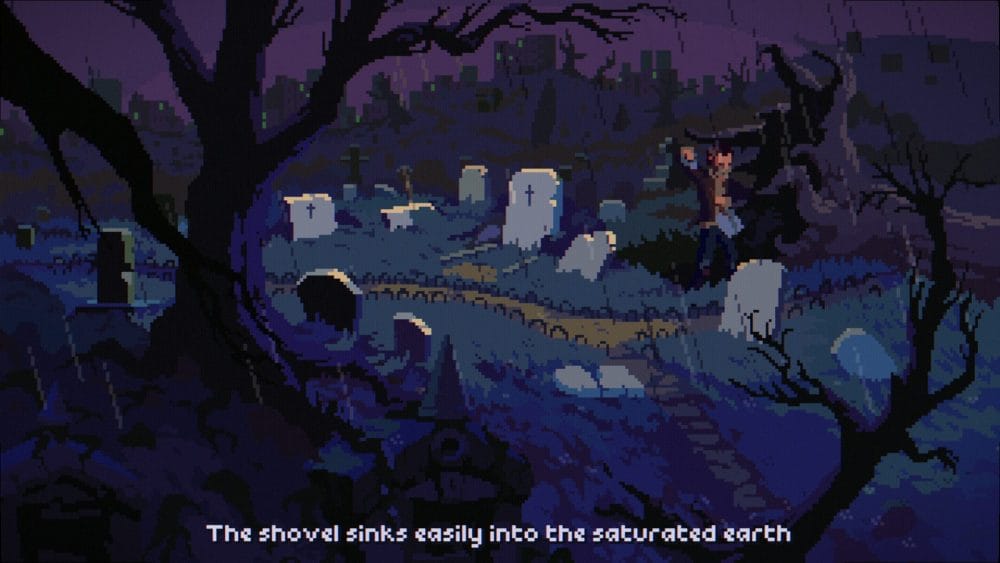
What I found most impressive about The Drifter’s art direction, though, was the perspective and framing of certain locations. A standout moment for me was when I noticed I was viewing a hair-raising sequence midway through the game through a window, blinds cord and all. It was as if I were an unknown inhabitant of Mawson, roused by the sounds coming from outside, and now a witness to what was befalling our player character. Something so simple creates a level of intimacy that I didn’t expect, and adds to the Noir feel of the game, immediately making me think of the 1954 Hitchcock thriller Rear Window.
The cast of the game, for the most part, feels like real people despite their pixelated appearances. Part of this is due to the voice acting, which I’ll get to later, but it’s also conveyed in their silhouettes and animations. Each character looks distinct, with a personality that matches their look, from the overzealous young reporter in her work attire and tight ponytail to Mick’s disheveled appearance. The animations of The Drifter also carry through that more grounded approach to design, doing away with overblown cartoony reactions, and instead conveying character actions and emotions with more subtlety.
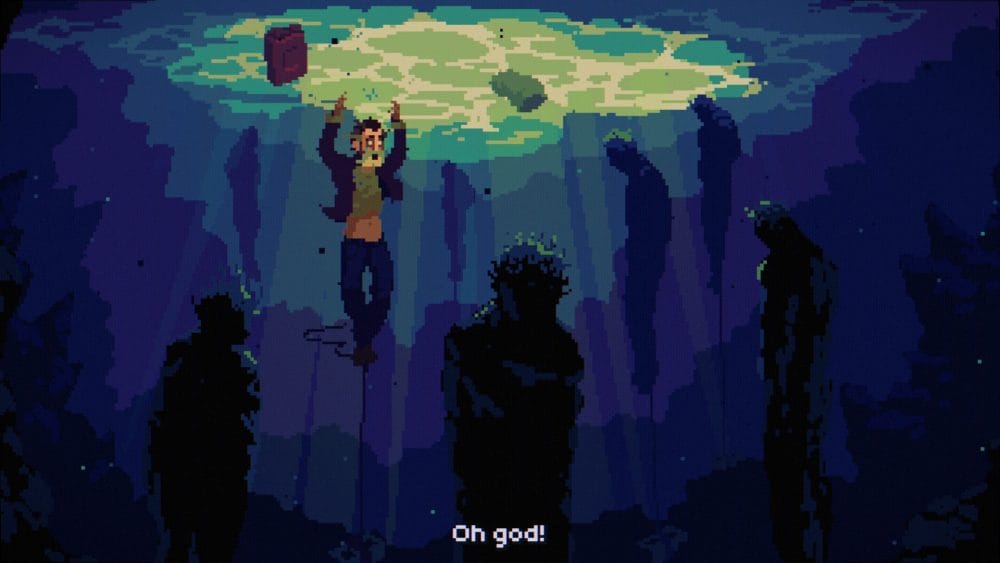
There are a few moments where the game will fade to a black screen, with Mick explaining what happens, which, while no doubt helped cut back on animations, felt odd to me throughout my 10-hour playthrough. I’ll also say here that the pacing of the game felt just right to me, with certain chapters focused more on investigation work and others made up of high-tension setpieces. The way the story unfolds is also handled deftly, and ramps up suitably in the latter chapters of the game.
Sound
Those same inspirations I mentioned earlier are carried into the music and sound design, helping create a cohesive tone and eeriness throughout the game. Unsettling synths make up most of the music, another staple of 80s and 90s horror cinema, that also heightens the game’s more supernatural elements as the game progresses.
The Drifter’s sound design is also excellent, from the ambience of each environment you visit, the perfectly paired sound effects accompanying each action, even the simple by effective sound design of the game’s UI. But I have to heap my praise on the voice acting, especially the lead, played by Adrian Vaughan, who does an amazing job playing the complicated and not entirely likeable protagonist. There are one or two characters who do feel a little caricaturish to me, but one of them, Detective Hara, happens to be my favorite character in the game. With his large, quaffed hair, mustard yellow mac coat with its high collar, and his immediate adoption of calling Mick “Boss”, I adored every scene and conversation with this cliché pulpy detective; a brilliant mix of Dick Tracy and Spike Spiegel from Cowboy Bebop.
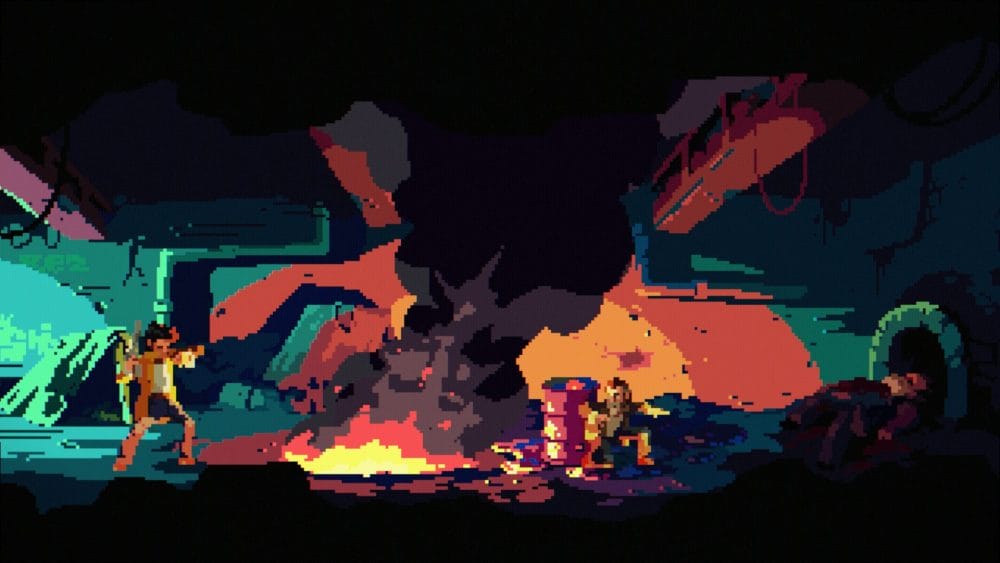
Conclusion
The Drifter is a fantastic supernatural thriller and point-and-click investigation game rolled into one, staying true to the staples of the genre while updating certain elements for a current-day audience. The team at Powrhoof has fashioned a gritty, intriguing tale that keeps you guessing without feeling lost, enticing you with breadcrumbs stuck in the muck collecting in the corners of Mawson. For those who love to solve problems with their logic and wits, and slowly unravel a mystery like none other in point-and-click games, The Dirfter is a must-play.

The Drifter is out now and available on PC(Steam) and Nintendo Switch.
The Drifter was reviewed on PC(Steam) using a controller.
We would like to thank Powerhoof for providing the code for this review.
The Drifter Guides
- Misspent Youth Achievement Guide
- Gratuitous Reference Achievement Guide
- Violent Mind Achievement Guide
- A Bit Morish Achievement Guide

